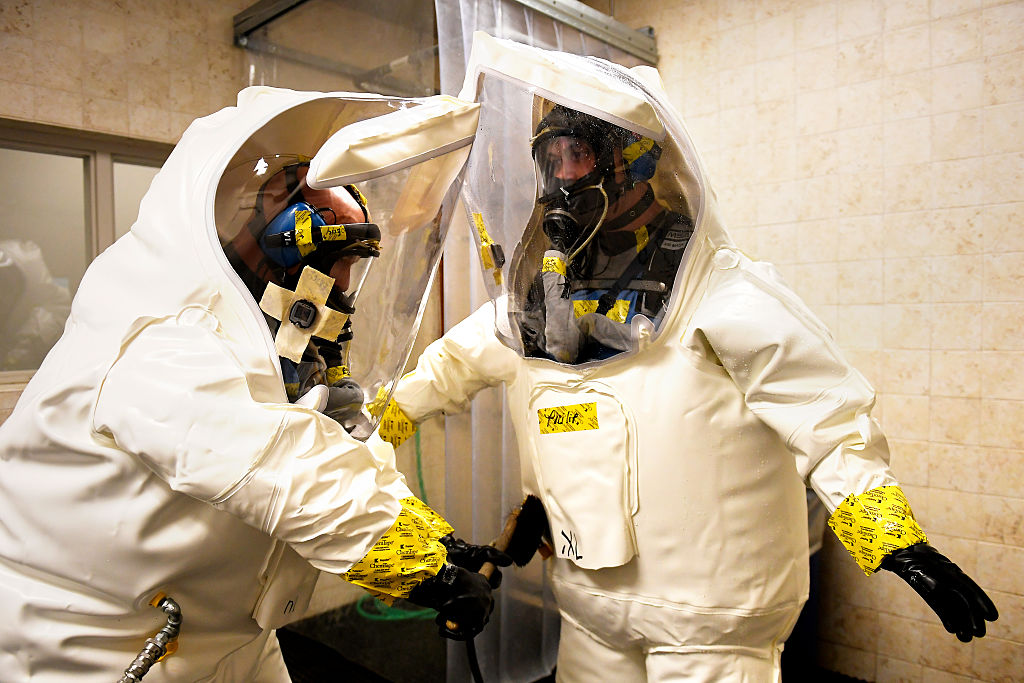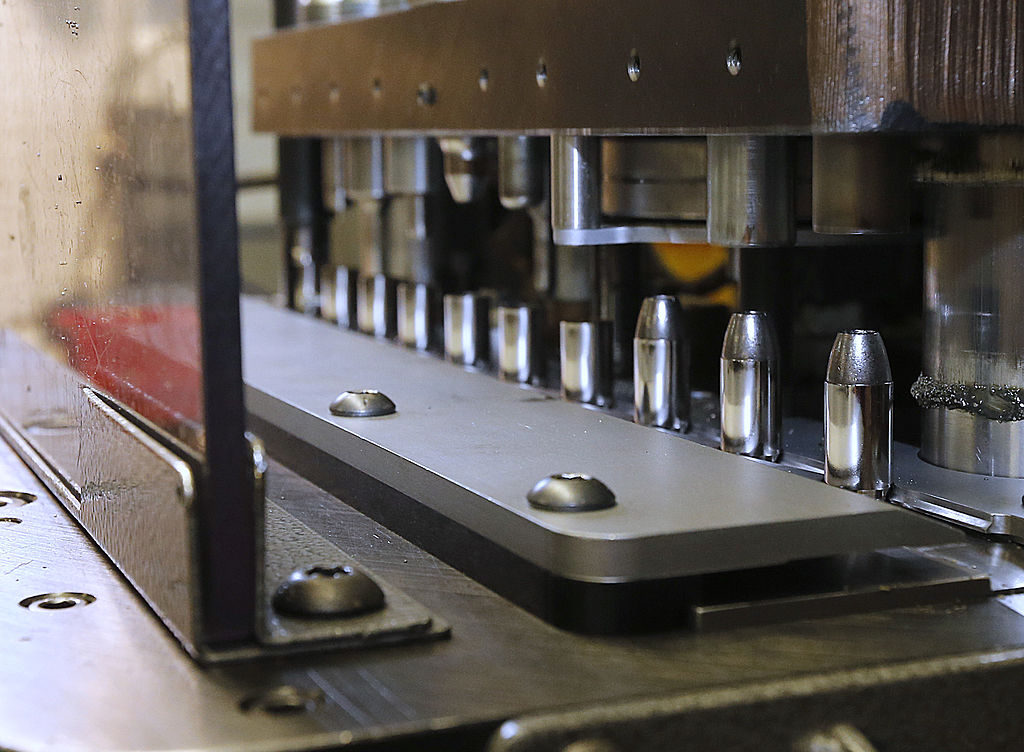Is the U.S. losing the hypersonic missile race?
Proponents say these new weapons are a game changer on the battlefield


The Air Force announced this week that it has successfully tested a hypersonic weapon built by Lockheed Martin — a development that comes after several years of American fretting that rival countries like Russia and China have a head start on building the advanced missiles. This wasn't the first hypersonic test by the United States: Officials announced last month that a different system was tested in mid-March.
"In recent months, top Pentagon officials have been pushing to speed up development of the fast-flying weapons," Marcus Weisgerber reports at Defense One. "Former government and industry officials say old U.S. testing ranges and infrastructure are slowing development." Why are hypersonic weapons a burning issue for defense officials, and how will they change the future of armed conflict?
What makes a missile hypersonic?
"Essentially, all missiles are hypersonic – which means they travel at least five times the speed of sound," Brad Lendon writes at CNN. What makes the new generation of weapons different from older missiles is that they're maneuverable, able to "fly at hypersonic speed while adjusting course and altitude to fly under radar detection and around missile defenses."
The Week
Escape your echo chamber. Get the facts behind the news, plus analysis from multiple perspectives.

Sign up for The Week's Free Newsletters
From our morning news briefing to a weekly Good News Newsletter, get the best of The Week delivered directly to your inbox.
From our morning news briefing to a weekly Good News Newsletter, get the best of The Week delivered directly to your inbox.
"The new generation of hypersonic missiles fly very fast, but not as fast as" intercontinental ballistic missiles armed with nuclear warheads during the Cold War, adds Iain Boyd at The Conversation. "They are launched on smaller rockets that keep them within the upper reaches of the atmosphere."
Why are they considered so dangerous?
They're extremely difficult to defend against. "Capable of traveling at more than 15 times the speed of sound, hypersonic missiles arrive at their targets in a blinding, destructive flash, before any sonic booms or other meaningful warning," R. Jeffrey Smith wrote in a 2019 overview for the New York Times. "So far, there are no surefire defenses. Fast, effective, precise and unstoppable — these are rare but highly desired characteristics on the modern battlefield." Aircraft carriers, one of the preeminent symbols of American military might, are thought to be particularly vulnerable, which "might eventually render the floating behemoths obsolete."
But hypersonic weapons might be overhyped. "Our studies indicate that hypersonic weapons may have advantages in certain scenarios, but by no means do they constitute a revolution," David Wright and Cameron Tracy wrote last year in Scientific American. The problem? Science. The speed and maneuverability of hypersonics are constrained by factors — like atmospheric drag — that affect all missiles and airplanes. The laws of physics still exist. "When missiles fly beyond Mach 5, materials melt, airflow turns turbulent, and budgets enter the stratosphere," Philip Ross writes for IEEE Spectrum. More dangerous than the weapons themselves is the arms race they might inspire. Wright and Tracy say the mania around hypersonics "has driven big increases in spending on these systems and heightened fear, distrust and the risk of conflict among the U.S., Russia, and China."
Who is leading the hypersonic race?
Not the United States. Russia and China already "have a number of hypersonic weapons programs and have likely fielded operational hypersonic glide vehicles—potentially armed with nuclear warheads," the Congressional Research Service reports. U.S. hypersonic weapons are still in the design stage, but they aren't being designed to carry nukes. That actually makes the challenge more difficult: "As a result, U.S. hypersonic weapons will likely require greater accuracy and will be more technically challenging to develop than nuclear-armed Chinese and Russian systems."
A free daily email with the biggest news stories of the day – and the best features from TheWeek.com
But Russia's head start, in particular, also comes with caveats. Russia has reportedly used hypersonic missiles in its war against Ukraine, but it doesn't seem to have made much difference, Joint Chiefs of Staff Chairman Mark Milley told Congress this month. "Obviously, the distinguishing factor of a hypersonic missile is the speed at which it travels … but other than the speed of the weapon — in terms of its effect on a given target — we are not seeing really significant or game-changing effects to date with the delivery of the small number of hypersonics that the Russians have used," he said.
How long until the U.S. catches up?
Hard to say. The Pentagon has asked for $4.7 billion for hypersonic research in its 2023 budget, a significant increase over the $3.8 billion it asked for in 2022, according to the Congressional Research Service report. But the Department of Defense "has not established any programs of record for hypersonic weapons, suggesting that it may not have approved either mission requirements for the systems or long-term funding plans." The recent Air Force missile test is part of a process of "evaluation of potential weapon system concepts and mission sets." In other words: The U.S. government is officially still trying to figure out if it wants to be in the hypersonic weapons business.
But that's just a formality. There might be "unanswered questions" about the cost and mission of such a program, there is a "top-level push for a reinvigorated focus" on hypersonic weapons, Shannon Bugos reports for the Arms Control Association. Defense Secretary Lloyd Austin made that plain in testimony to Congress earlier this month. "This is a priority for me," Austin said. "You know, we've made some progress, but we have a ways to go yet."
Joel Mathis is a writer with 30 years of newspaper and online journalism experience. His work also regularly appears in National Geographic and The Kansas City Star. His awards include best online commentary at the Online News Association and (twice) at the City and Regional Magazine Association.
-
 Political cartoons for January 4
Political cartoons for January 4Cartoons Sunday's political cartoons include a resolution to learn a new language, and new names in Hades and on battleships
-
 The ultimate films of 2025 by genre
The ultimate films of 2025 by genreThe Week Recommends From comedies to thrillers, documentaries to animations, 2025 featured some unforgettable film moments
-
 Political cartoons for January 3
Political cartoons for January 3Cartoons Saturday's political cartoons include citizen journalists, self-reflective AI, and Donald Trump's transparency
-
 Tuberville's military promotions block is upending lives, combat readiness, 3 military branch chiefs say
Tuberville's military promotions block is upending lives, combat readiness, 3 military branch chiefs saySpeed Read
-
 US commissions first-ever Navy ship in a foreign port
US commissions first-ever Navy ship in a foreign portSpeed Read
-
 The US will soon finish destroying its last chemical weapons
The US will soon finish destroying its last chemical weaponsSpeed Read
-
 Is America in a shadow war with Russia?
Is America in a shadow war with Russia?Talking Point Ukraine's increasing aggressiveness on Russian territory is making American officials nervous
-
 Did Ukraine orchestrate the Kremlin drone strike?
Did Ukraine orchestrate the Kremlin drone strike?Speed Read If Kyiv isn't behind the humiliating attack, who is?
-
 U.S. production of bullets, shells, and missiles sidelined by explosion at 1 Louisiana gunpowder mill
U.S. production of bullets, shells, and missiles sidelined by explosion at 1 Louisiana gunpowder millSpeed Read
-
 Leaked U.S. files jumped from online spats to global breach through pro-Russia account run by U.S. Navy vet
Leaked U.S. files jumped from online spats to global breach through pro-Russia account run by U.S. Navy vetSpeed Read
-
 Man behind U.S. intelligence leak worked on a military base, shared files with foreigners, friend says
Man behind U.S. intelligence leak worked on a military base, shared files with foreigners, friend saysSpeed Read
